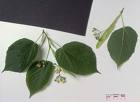American Basswood Tree Information
Images of American Basswood:






American Basswood grows in the following 34 states and provinces:
Arkansas, Connecticut, Delaware, Illinois, Indiana, Iowa, Kansas, Kentucky, Maine, Manitoba, Maryland, Massachusetts, Michigan, Minnesota, Missouri, Nebraska, New Brunswick, New Hampshire, New Jersey, New York, North Carolina, North Dakota, Ohio, Oklahoma, Ontario, Pennsylvania, Rhode Island, South Carolina, South Dakota, Tennessee, Vermont, Virginia, West Virginia, WisconsinInformation about American Basswood:
The Tilia Americana is commonly known as the American Basswood, Basswood as well as Linden.
The currently accepted scientific name for basswood is Tilia americana L. . Some authorities agree that T. americana, T. heterophylla, and T. caroliniana are more correctly treated as one highly variable species .The native range of basswood extends from southwestern New Brunswick and Maine west to southern Quebec, southern and western Ontario, Michigan, Minnesota, and southeastern Manitoba; south to eastern North Dakota, northern and eastern Nebraska, eastern Kansas, and northeastern Oklahoma; east to northern Arkansas, Tennessee, western North Carolina, and New Jersey .Basswood generally occurs in mixed stands and rarely forms pure stands . It is codominant in the sugar maple (Acer saccharum)-basswood cover type, and is a common component of many other mesophytic forests . Associates in the sugar maple-basswood type include white ash (Fraxinus americana), northern red oak (Quercus rubra), eastern hophornbeam (Ostrya americana), red maple (A. rubrum), and American elm (Ulmus americana) . Typical sugar maple-basswood communities in Wisconsin and Minnesota include 21 percent northern red oak, 35 percent basswood, 17 percent sugar maple, and 17 percent other species . To the east, eastern hemlock (Tsuga canadensis) may be present, and communities on mesic sites would be more like the following: 52 percent sugar maple, 27 percent basswood, 14 percent yellow birch (Betula alleghaniensis), 4 percent eastern hemlock, and 3 percent other species . Publications in which basswood is listed as a dominant, codominant, or indicator species include: The vegetation of Wisconsin The principal plant associations of the Saint Lawrence Valley Deciduous forest A forest classification for the Maritime Provinces A classification of the deciduous forest of eastern North America .Some of the information provided here is attributed to:Sullivan, Janet. 1994. Tilia americana. In: Fire Effects Information System, [Online]. U.S. Department of Agriculture, Forest Service, Rocky Mountain Research Station, Fire Sciences Laboratory (Producer). , available at the USDA Fire Effects Information System (FEIS) website